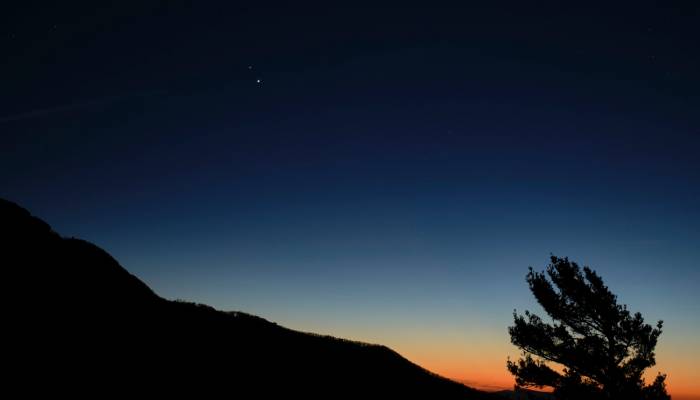
Muscat: Oman, along with other parts of the world, will witness on Monday two astronomical phenomena, a rare event coinciding with the winter solstice.
At 2:02 pm on December 21, Oman, the skies above the rest of the Arab World and parts of the northern hemisphere, will witness what’s called the Great Conjunction.
This rare astronomical event will see Jupiter and Saturn line up very close to each other, according to Faisal bin Mohammed Al Qartubi, the deputy chairman of astronomical observations at the Oman Astronomical Society.
“The two will be separated by a distance of 0.1 degrees, or six arc minutes,” he said. “As for the real distance between these two planets, it’ll actually be about hundreds of millions of kilometres. This phenomenon can be observed when you look at the horizon in a southwest direction. This phenomenon will last for nearly two hours.
“This event involving the close proximity of the two giants of the solar system has not occurred since March 1226, and will not be repeated until 2080,” added Al Qartubi. “The reason it’s called the Great Conjunction is because this involves the two largest planets in our solar system.”
Given the rarity of this event, this astronomical phenomenon is considered a great one for astronomers to record and preserve for posterity. They will be able to capture, in the same lens, both Jupiter and Saturn.
“The reason for this rare occurrence is because of the slow movement across the skies: Jupiter takes 11 years and Saturn about 29 years to orbit the sun,” explained Al Qartubi. “Their orbits are not exactly on the same plane, so these planets normally pass above or below each other. Some planets do meet in the sky, but this occurrence takes place about once every 20 years.”
The Oman Astronomical Society will be broadcasting this live on its social media channels, with photographs being made available through its astronomy telescopes. Their coverage will begin after sunset next Monday.
Adding to this, Issam bin Ali Al Salhi, a member of the Oman Astronomical Society, said, “Monday will have the shortest duration of daytime this year, and the longest amount of nighttime. The run will rise from the southeast at 6:45am, reach its peak at 12:05 in the afternoon, and then set in the south-west at 5:25 pm.
“This will be the case among most of the regions in the northern half of our world,” he went on to say. “Daylight in Muscat will last for about 10 hours, 40 minutes and 36 seconds. The arrival of the winter solstice in the northern hemisphere coincides with the summer solstice in the south.”
The winter solstice is an astronomical event that takes place because of the tilt of the Earth’s axis, which isn’t completely vertical, but has a tilt of 23 and a half degrees. During this event, the sun reaches the southernmost point of the horizon, and the North Pole faces away from it. Not all of the places around the earth will see a sunrise and sunset on this day, because on the day of the winter solstice, the sun remains above the horizon.
Throughout the day, the Antarctic Circle will not witness either a sunrise or a sunset, leading to a phenomenon called the ‘midnight sun’. The sun remaining low and in the south-east corner of the horizon characterises the winter solstice.
“This phenomenon comes in the wake of the autumn equinox, which takes place in September,” added Al Salhi. “The movement of the sun continues gradually to the south after crossing the equator in a perpendicular manner. The lengths of days become steadily shorter in the northern hemisphere after this, a process that reaches its climax on the day of the winter solstice.”
The planet Earth has two kinds of movements: the first being the movement around its axis from east to west every 24 hours, while also orbiting around the sun, a process that takes 365.25 days to complete. These two result in the day and night cycle of the earth, as well as the four seasons witnessed on the planet.
“People who observe the sun after the winter solstice will see that the sun will continue to rise from a southerly point in the sky, before gradually changing its path to a more northerly one,” explained Al Salhi. “This is because of the nature of the earth’s orbital movement around the sun. It will continue in this manner until the duration of daytime is equal to that of the night, which is called the Spring Equinox, and will take place at 1:37pm on March 20, 2021.”